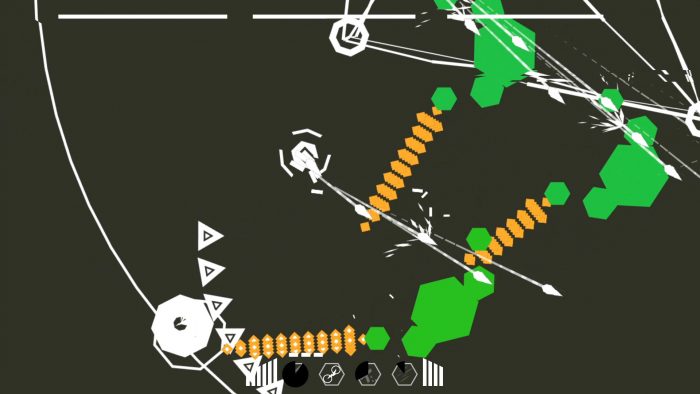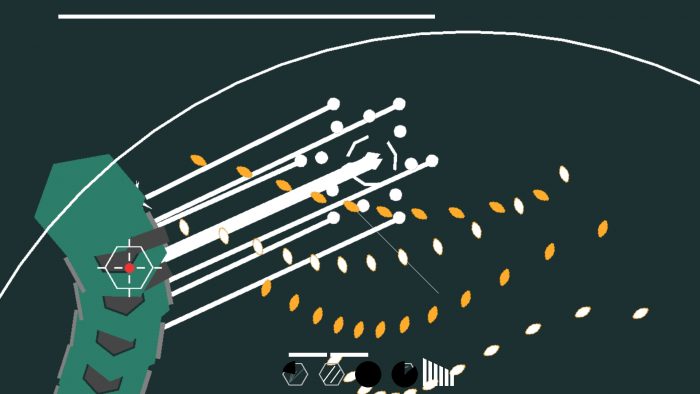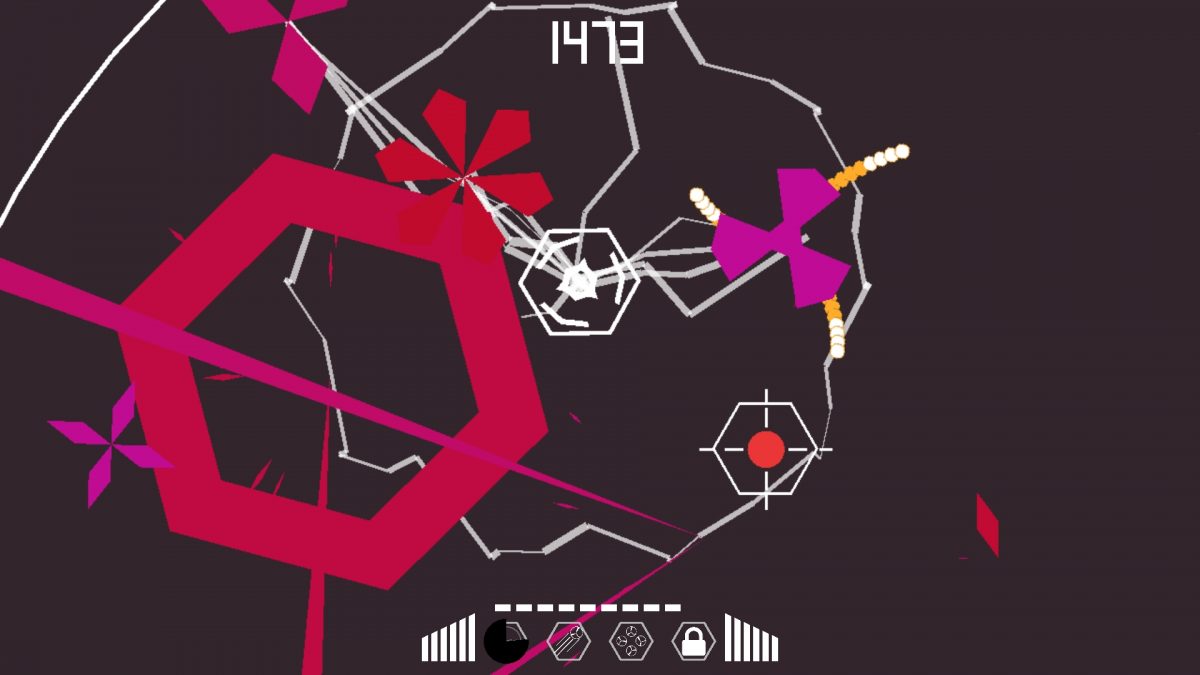
There’s a great scene in the movie Office Space where Jennifer Aniston’s character, restaurant waitress Joanna, is confronted by her boss for not wearing enough pins on her shirt. “You said you wanted to express yourself.” She reminds him that 15 pieces of flair is the minimum, and that if he wanted her to wear 37 pieces of flair then he should have just told her.
Vectorium is wearing 15 pieces of flair.
When I think of classic arcades, there’s a certain soft spot for the vector-based era of games. The style made heads turn in the early 80s, using special monitors that displayed straight lines and curves instead of pixels and points. I spent hours ogling games like Asteroids for their novelty, as the style quickly disappeared by the middle of the decade. There’s been a resurgence of the vector lately, thanks to modern dev tools making it much easier to create the games. Coconut Island & IndigoBlue’s Vectorium looks to continue the revival of the graphical style, but while its efforts may be noble, it ends up as flat as the shapes that it’s designed around.
Vectorium is a twin-stick bullet hell arcade shooter. We fly a little ship around a circular arena, aim at enemies and blast away, hopefully avoiding the return fire in the process. The enemy ships are as minimal as our triangle, or as complex as a few triangles — sometimes even a rectangle or a hexagon that mimics the shape of a flower or a centipede. They’re not complex, but that’s intentional, trying to ape the style of those very early arcade experiences. Unfortunately that also makes for a very basic looking game, even amid a hell of bullets and lasers flying at us. There’s also none of the neon that you might expect from modern trends, just muted colors that make it bland to look at. As we blast enemies we unlock new weapons (TWO lasers! Missiles! Shields!) and more ships to choose from. Eventually we face off against a giant boss, essentially an even bigger flower or tank or other ship, with even more bullets and laser shooting out at us.
There are 15 of these levels, and they last roughly a couple of minutes each. The game doesn’t measure success in points, rather in percentage. Completing the level nets us 100%, and our time to get to that point is uploaded and stacked against others on a leaderboard. There are single player and multiplayer modes, if we’d like to take on a run with a friend.
And that’s it.

Now, a game doesn’t need to be complex or packed with modes to be addictive or keep us coming back, but Vectorium doesn’t manage to suck us in like the classic games that it’s modeled against, and certainly not like modern games in its genre. The level design is uninspired with enemies appearing at random, and we’re never challenged — except when up against the bosses, which can be downright infuriating if we’ve selected the wrong ship to battle with. The music is only slightly better than an electronica-inspired elevator, with low-key beats that take far too long to climax. The controls are fine, with flight and aiming feeling very natural, but it helps to be ambidextrous and have an extra finger if you want to launch a weapon while aiming the fire stick with the same thumb. The devs have also designed the game’s interface to be too cumbersome, forcing us to fly a ship (or a giant cursor) around the layers of menus to access what we want.
Ultimately, Vectorium leaves us feeling like we’ve played the game before, a million times, in arcades and on consoles with little to differentiate it. There’s nothing really special here; it just feels like a build-to-print vector bullet hell shooter. It’s not bad, it’s not good, it’s just right there, in the middle, getting the minimal pieces of flair.
This review is based on a retail code for the game sent to SideQuesting by the publisher’s PR.


No Comments